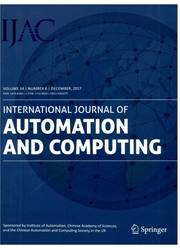

 中文摘要:
中文摘要:
Due to limitations in geometric representation and semantic description,the current pedestrian route analysis models are inadequate.To express the geometry of geographic entities in a micro-spatial environment accurately,the concept of a grid is presented,and grid-based methods for modeling geospatial objects are described.The semantic constitution of a building environment and the methods for modeling rooms,corridors,and staircases with grid objects are described.Based on the topology relationship between grid objects,a grid-based graph for a building environment is presented,and the corresponding route algorithm for pedestrians is proposed.The main advantages of the graph model proposed in this paper are as follows:1) consideration of both semantic and geometric information,2) consideration of the need for accurate geometric representation of the micro-spatial environment and the efficiency of pedestrian route analysis,3) applicability of the graph model to route analysis in both static and dynamic environments,and 4) ability of the multi-hierarchical route analysis to integrate the multiple levels of pedestrian decision characteristics,from the high to the low,to determine the optimal path.
 英文摘要:
英文摘要:
Due to limitations in geometric representation and semantic description, the current pedestrian route analysis models are inadequate. To express the geometry of geographic entities in a micro-spatial environment accurately, the concept of a grid is presented, and grid-based methods for modeling geospatial objects are described. The semantic constitution of a building environment and the methods for modeling rooms, corridors, and staircases with grid objects are described. Based on the topology relationship between grid objects, a grid-based graph for a building environment is presented, and the corresponding route algorithm for pedestrians is proposed. The main advantages of the graph model proposed in this paper are as follows: 1) consideration of both semantic and geometric information, 2) consideration of the need for accurate geometric representation of the micro-spatial environment and the efficiency of pedestrian route analysis, 3) applicability of the graph model to route analysis in both static and dynamic environments, and 4) ability of the multi-hierarchical route analysis to integrate the multiple levels of pedestrian decision characteristics, from the high to the low, to determine the optimal path.
 同期刊论文项目
同期刊论文项目
 同项目期刊论文
同项目期刊论文
 Design and key techniques of a collaborative virtual flood experiment that integrates cellular autom
Design and key techniques of a collaborative virtual flood experiment that integrates cellular autom 期刊信息
期刊信息
